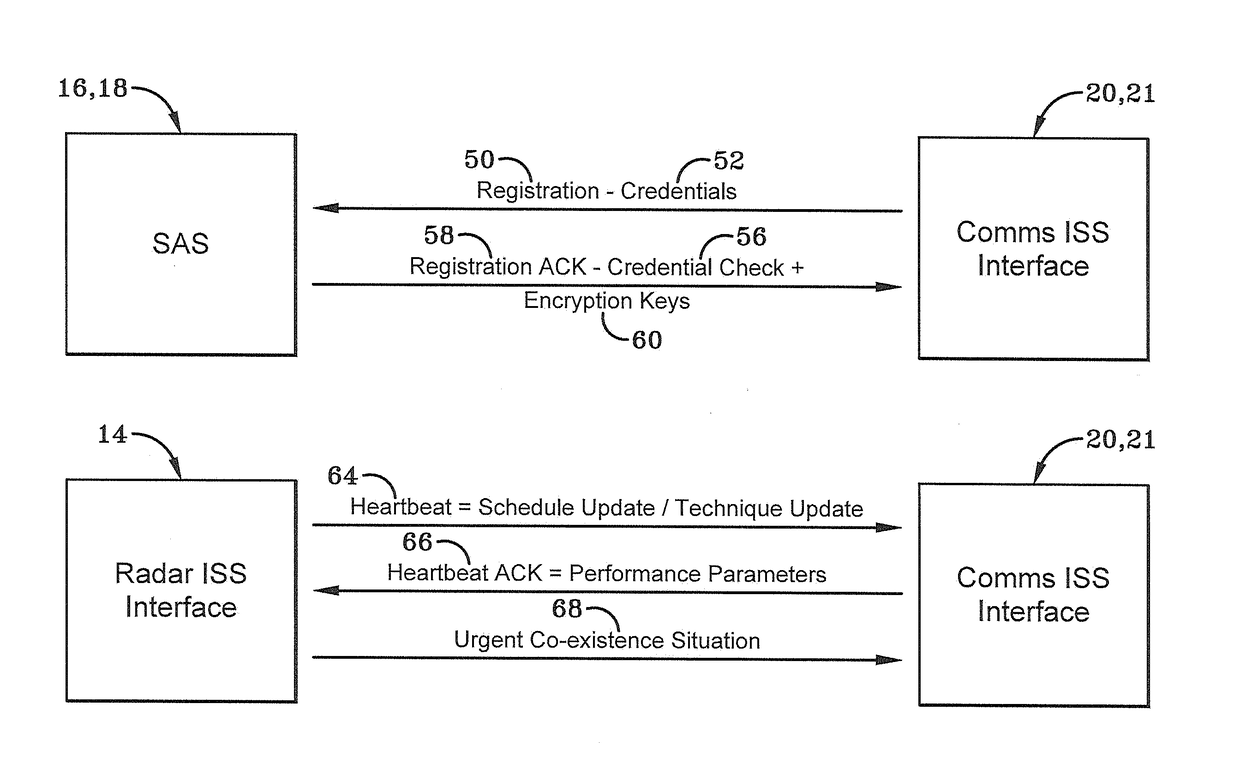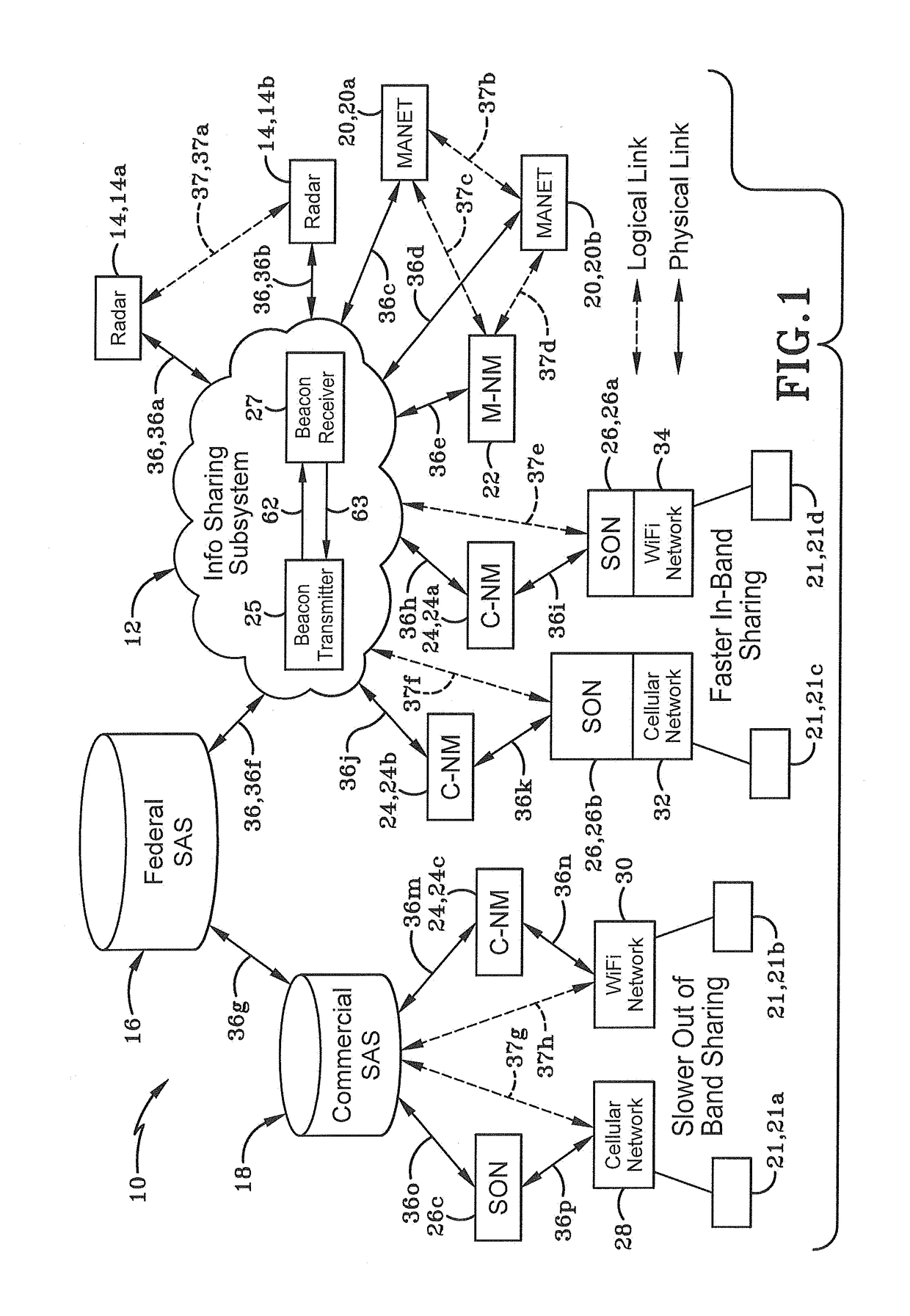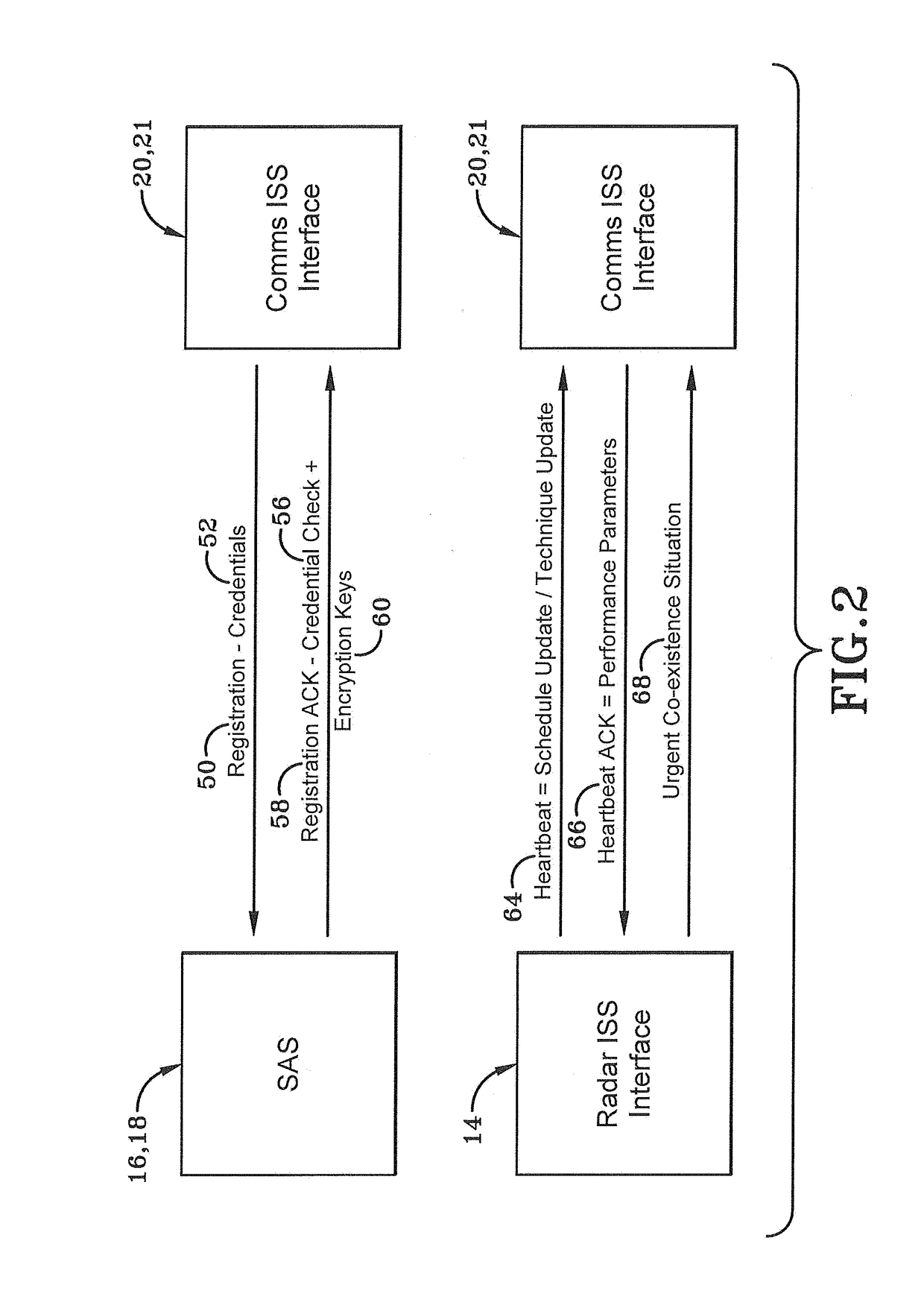Spectrum sharing system and method thereof
a spectrum sharing and spectrum technology, applied in the field of wireless communication, can solve the problems of increasing pressure on government and military systems, interference to radars, and difficulty for certain radars to operate in these bands at these locations, so as to improve spectral utilization and efficiency, and efficient spectrum utilization
- Summary
- Abstract
- Description
- Claims
- Application Information
AI Technical Summary
Benefits of technology
Problems solved by technology
Method used
Image
Examples
Embodiment Construction
[0037]The present disclosure provides a solution that enables spectrum co-existence between any radar and other communications systems. One exemplary embodiment provides an Information Sharing Subsystem (ISS) that enables government controlled radar and commercial communications systems to exchange operating parameters to share the spectrum. As used herein, government refers to any governmental body in the United States or elsewhere that controls or manages radars, communication systems and spectrum including federal and state agencies and the military, as compared to the commercial entities that manage the same.
[0038]As depicted in FIG. 1, a system for radar and communications spectrum sharing is generally depicted at 10. System 10 may include an ISS 12, one or more radars 14, a government spectrum access system 16, a commercial spectrum access system 18, one or more military Mobile Adhoc Network (MANET) nodes 20, one or more commercial nodes 21 (e.g.: Wi-Fi nodes, cellular base st...
PUM
 Login to View More
Login to View More Abstract
Description
Claims
Application Information
 Login to View More
Login to View More - R&D
- Intellectual Property
- Life Sciences
- Materials
- Tech Scout
- Unparalleled Data Quality
- Higher Quality Content
- 60% Fewer Hallucinations
Browse by: Latest US Patents, China's latest patents, Technical Efficacy Thesaurus, Application Domain, Technology Topic, Popular Technical Reports.
© 2025 PatSnap. All rights reserved.Legal|Privacy policy|Modern Slavery Act Transparency Statement|Sitemap|About US| Contact US: help@patsnap.com



